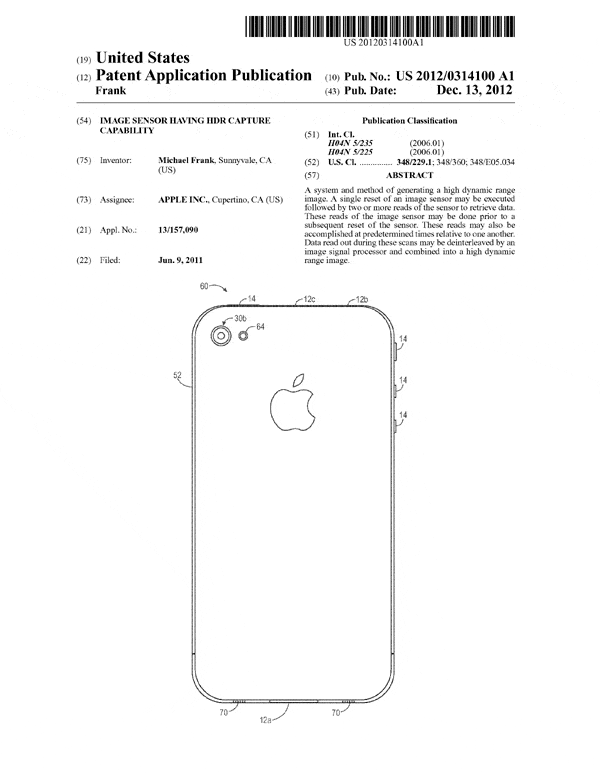HDR without the drawbacks: Apple patent hints at the future of imaging
posted Friday, December 28, 2012 at 2:31 PM EST

Over the last few years, high dynamic range photography has become an increasingly common, built-in tool in both fixed-lens and interchangeable-lens cameras. Unfortunately, most existing HDR modes also have some pretty significant drawbacks. Multi-shot HDR modes typically don't handle moving subjects well -- in fact, many can't correct for even very modest camera motion between shots, let alone for subject motion. Single-shot modes, meanwhile, don't have any such problems, but they actually aren't providing true HDR images at all. They simply tweak the image to provide a crunchy, pseudo-HDR look. A new patent application from Apple aims to change all that.
The patent application, uncovered before the holidays by the Patently Apple blog and since picked up by several other tech sites, can be seen in its entirety on the US Patent and Trademark Office website. In a nutshell, what it provides for is an image sensor that can read out information from pixels more than once during an exposure. That lets the camera obtain the multiple different exposures necessary to create a real HDR image, but without stopping and restarting the exposure.
In the process, the issue of camera and subject moving over time is minimized. Of course, both can still move and if so you'll still see a different degree of motion between the exposures, but now you only have the total exposure time of the most-exposed frame to contend with. Previously, multi-shot methods had to deal with the cumulative exposure time of multiple frames, plus the time taken by the camera to ready itself for the next shot between frames. (And if your slowest shutter speed is fast enough to freeze the motion, there's no problem of motion at all.)

Apple's technique is not the first to provide for true HDR from a single exposure, but we believe it does differ somewhat from existing methods. Fujifilm cameras based on Super CCD EXR image sensors that were announced back in 2008 can already provide true single-shot HDR by reading out pixels at different times during the exposure. But our understanding of that technology is that each pixel is only read out a single time -- it's just that half of them are read out midway during the exposure, and the other half at the end. That yields two different exposure levels from a single shot, but each has half the original resolution, and they're offset from each other ever so slightly. Apple's patent calls for the entire sensor to be read out at least twice during the shot, without resetting the exposure either globally or for the individual pixels as they're read out. That means you still have access to the full resolution of the sensor, just as you would if using multiple separately-captured frames to create the final HDR image.
Of course, it should be noted that this is so far just a patent application. It hasn't yet been granted, and even if the USPTO decides it's patentable, there's no guarantee that the patent will ever end up in a shipping product. If it arrives in a shipping product, though, HDR photography could be rather more useful to casual photographers than it is now...
(via PetaPixel)